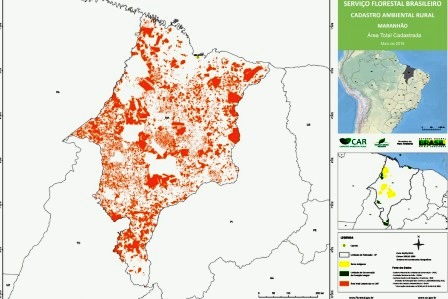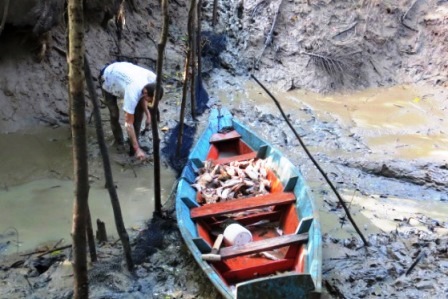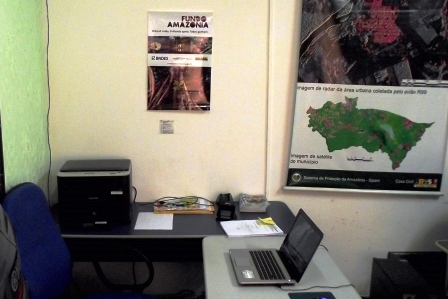Project selected under the Public Call "Consolidation and Strengthening of Sustainable and Inclusive Value Chains"
CONTEXTUALIZATION
ASPROC is a non-profit association founded in 1994, emerging from the extractivist movement in the Amazon. It currently brings together 943 families and 4,092 people from 46 communities, and is a reference in agroecology, extractivism, and organic production, contributing to environmental conservation and the strengthening of local value chains—especially those related to fish, açaí, and vegetable oils, which, along with the “Riverside Trade for Citizenship and Solidarity” program, are the main focus of this project.
With regard to lake management for pirarucu fishing, ASPROC’s work benefits at least 14 communities, generating income for around 150 families. In addition, the association plays a key role in community engagement in lake surveillance and sustainable fishing (which has led to an increase in managed stocks), as well as in the marketing of pirarucu from various management territories (including federal and state conservation units, Indigenous lands, and fishing agreement areas in the state of Amazonas). For this reason, ASPROC has been designated as the managing institution of the collective brand "Gosto da Amazônia"¹.
ASPROC has also played a crucial role in the development of the oilseed management plan for the Médio Juruá Extractive Reserve, enabling the signing of commercial agreements in the region and income generation for riverside families. In the açaí value chain, ASPROC has stood out, especially for implementing Agroforestry Systems (SAFs) and facilitating seed purchasing agreements with companies.
Also noteworthy is its involvement in the solidarity economy program "Riverside Trade for Citizenship and Solidarity", created by ASPROC about 15 years ago. This initiative supports over 600 families in 55 communities in the municipality of Carauari, creating opportunities for production and income generation for its members. More specifically, the program allows the flow of riverside community production from locations up to 52 hours away from urban centers, enabling producers to sell their goods in strategic marketing hubs without having to leave their communities. At these same hubs, producers can also purchase goods for family consumption, avoiding the need to travel to cities.
In addition to ASPROC, this project will support four other institutions:
-
Association of Agroextractivist Residents of the Uacari Sustainable Development Reserve (AMARU);
-
Mixed Cooperative for Sustainable Development and Solidarity Economy of the Médio Juruá Extractive Reserve (CODAEMJ)
-
Association of Rural Workers of Juruá (ASTRUJ)
-
Association of the Deni People of the Xeruã River (ASPODEX)
THE PROJECT
The project is divided into 7 components, with the main activities summarized below:
Components 1 to 5 – Community-Based Entities: (AMARU, CODAEMJ, ASTRUJ, ASPODEX, and ASPROC):
Activities include institutional strengthening, commercialization, production and service delivery, processing, distribution and storage; technical assistance, training, compliance with regulations, production management and control, among others. The main value chains supported are fish, açaí, and vegetable oils.
Component 6 – Cross-Cutting: A cross-cutting component for all community organizations involved in the project implementation. Activities include: Training and certification programs; Implementation of shared-use distribution, storage, and processing infrastructure; Development of a territorial safety plan; Actions for the maintenance and accident prevention in agro-industries; Communication initiatives; Scaling and replication of the social technology developed by ASPROC, known as the “Riverside Trade for Citizenship and Solidarity”.
Component 7 – Project Management: Covers coordination and governance, impact monitoring, administrative and financial management (including financial reporting), and auditing.
INTERVENTION LOGIC
The project falls under the “Sustainable Production” component (1) of the Amazon Fund Logical Framework, contributing to the following direct effects: (1.2) A Production chains of agroforestry and biodiversity products with added value increased. (1.3) Management and technical capabilities expanded for the implementation of economic activities for the sustainable use of forests and biodiversity. (1.4) Deforested and degraded areas recovered and used for economic or ecological conservation purposes.







